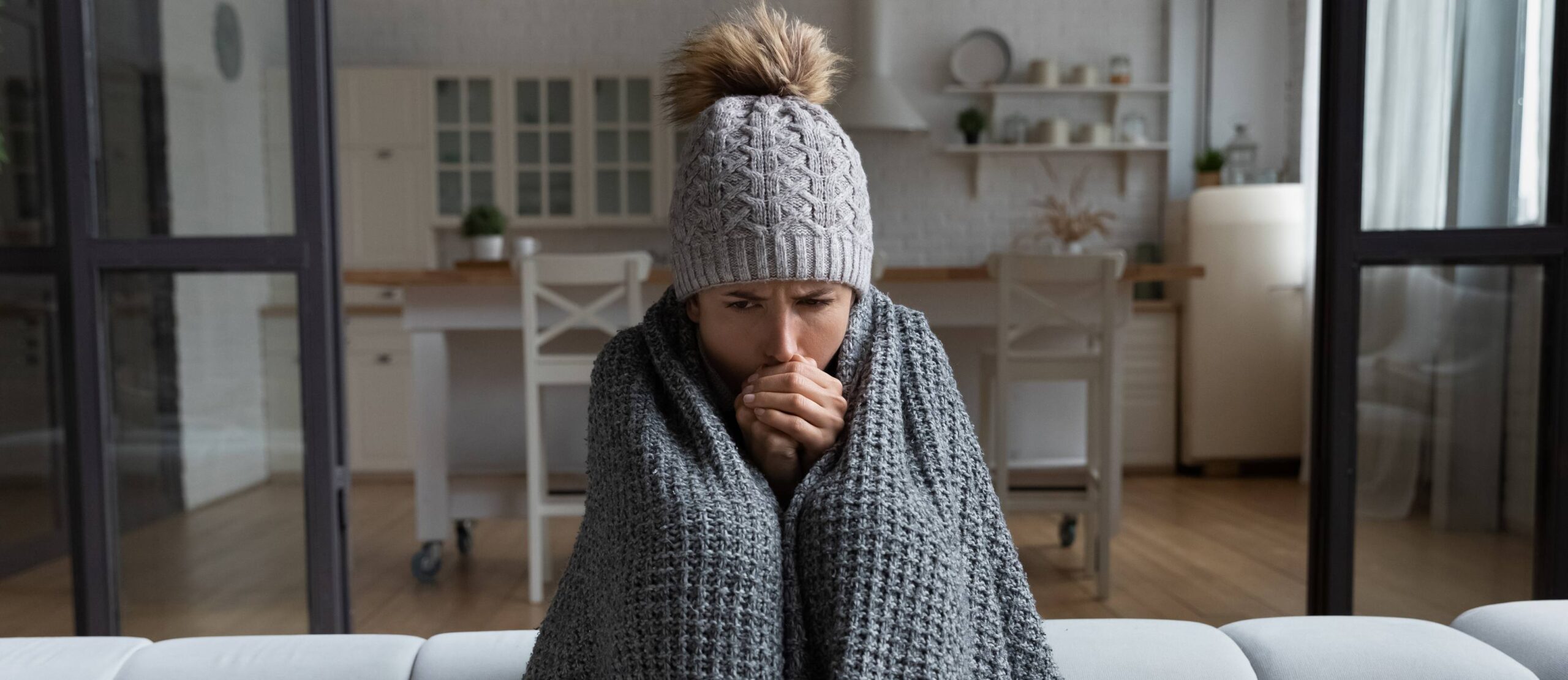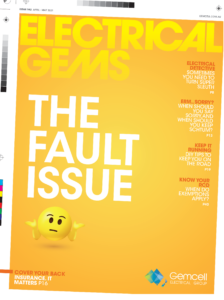Out Now
The AI Issue
Current Issue
The AI Issue
OCT - NOV 2025

We speak to the experts to get their advice on how to keep our homes warm in a more sustainable fashion.
While you can simply whack an electric heater, wood-burning stove or gas heater into a home if it’s getting a bit cold, it’s very much a ‘treating the symptom, not the cause’ kinda scenario.
After all, if you can stop homes getting chilly – or, at least, as chilly – in the first place, then the need to heat them up isn’t as great – which is why more and more people are looking towards alternative, more eco-friendly, ways of keeping their homes warm.
Kerri-Ann Hooper, Director at Carnelian Projects, says that insulation is something that is becoming an increasingly popular consideration.
“More and more homes are having thicker insulation in all rooms,” she says. “Increasingly, people are asking for insulation between each wall inside the house to assist with the heating – and cooling – of the home.”
Architect Liz Giorgio of Space& in Melbourne, says the way homes are designed is having a significant impact on heating considerations. She says,
“The design of a building can affect how much heat is retained or lost, how effectively it is distributed throughout the home, and how much energy is required to maintain a comfortable temperature.”
Liz says that there are five key considerations when designing a home – orientation, insulation, windows, building materials, and building layout.
“They can have a huge impact on heating requirements, and remove the need for artificial heating altogether,” she says.
“The orientation of a building impacts its exposure to sunlight, wind, and shade, while the level of insulation in a building can significantly affect how much heat is retained or lost.
“The type and placement of windows can also impact heating efficiency – double-glazed windows can help to prevent heat loss, while the placement of windows can be optimised to capture sunlight or create cross-ventilation to help regulate temperature.
“The materials used in building construction can also affect heating efficiency. Materials such as concrete and bricks have high thermal mass and can retain heat, while lightweight materials such as timber may require additional insulation to maintain warmth.
Hooper says that the ability to zone rooms is becoming increasingly popular – potentially moving away from the more ‘open plan’ living that was ‘in’ for quite a while.
“Another thing builders and clients are looking at more is how certain rooms can be closed off to maximise heat,” she says.
“For example, the kitchen and living areas being closed off with double doors or a barn door from back bedrooms to efficiently keep the heat in those areas.”
Electrical suppliers are also exploring ways to heat homes in new, more energy-efficient ways, to support heating advancements in building design and construction.
Joel Seagren, Business Development Engineer at Fantech, says that the need to ventilate homes during winter with air from outdoors can cause the indoor air temperature to drop – consequently meaning that heaters need to work harder to maintain or achieve the required temperature.
And that’s where heat recovery ventilation comes in.
“It extracts air from bathrooms and wet areas, uses a heat exchanger to recover that thermal energy with 80 per cent efficiency, and then supplies it back into habitable spaces,” he explains.
“It does certainly play a role in reducing heat demand in a ventilated building.”
It means, in effect, that if air of 20˚C is extracted, ‘fresh’ air of 16˚C can be pumped back into the building, reducing or indeed eliminating the need to ventilate with outdoor air.
In addition to the air extraction unit, dome ductwork’s required, as is an HRV unit, which can take up space from half a metre wide to something resembling a washing machine for a larger home.
Joel says, at present, this technology is popular throughout Europe, including in Germany, Spain, France and Belgium, and awareness is increasing here in Australia – with 80 per cent of installations here in new builds.
“It’s a growing space here in Australia, probably most popular in the passive house, high-end space at the moment – we’re talking million dollar builds rather than volume builds – but it’s something that can play a significant role in reducing reliance on artificial heating.”
Certainly, one to keep an eye on.
Keep up to date with our latest news and competitions by subscribing to our regular newsletter.

Issue 183
OCT - NOV 2024

Issue 182
AUG - SEPT 2024

Issue 181
JUN - JUL 2024

Issue 180
APR - MAY 2024

Issue 179
FEB - MARCH 2024

Issue 178
DEC 2023 - JAN 2024

Issue 177
OCT - NOV 2023

Issue 176
AUG - SEPT 2023

Issue 175
JUN - JUL 2023

Issue 174
APR - MAY 2023

Issue 173
FEB - MAR 2023

Issue 172
DEC 2022 - JAN 2023

Issue 171
OCT - NOV 2022

Issue 170
AUG - SEPT 2022

Issue 169
JUN - JUL 2022

Issue 168
APR - MAY 2022

Issue 167
FEB - MAR 2022

Issue 166
DEC 2021 - JAN 2022

Issue 165
OCT - NOV 2021

Issue 164
AUG - SEPT 2021

Issue 163
JUN - JUL 2021

Issue 162
APR - MAY 2021

Issue 161
FEB - MAR 2021

Issue 160
DEC 2020 - JAN 2021

Issue 159
OCT - NOV 2020

Issue 158
AUG - SEPT 2020

Issue 157
JUN - JUL 2022

Issue 156
APR - MAY 2020

Issue 155
FEB - MAR 2020

Issue 154
DEC 2019 - JAN 2020

Issue 153
OCT - NOV 2019

Issue 152
AUG - SEPT 2019

Issue 151
JUN - JUL 2019

Issue 150
APR - MAY 2019

Issue 149
FEB - MAR 2019

Issue 148
DEC 2018 - JAN 2019

Issue 147
OCT - NOV 2018

Issue 146
AUG - SEPT 2018

Issue 145
JUN - JUL 2018

Issue 144
APR - MAY 2018

Issue 143
FEB - MAR 2018

Issue 142
DEC 2016 - JAN 2017

Issue 141
OCT- NOV 2017

Issue 140
AUG - SEPT 2017

Issue 139
JUN - JUL 2017

Issue 138
APR - MAY 2017

Issue 137
FEB - MAR 2017

Issue 136
DEC 2016 - JAN 2017

Issue 135
OCT - NOV 2017

Issue 134
AUG - SEPT 2016

Issue 133
JUN - JUL 2016

Issue 132
APR - MAY 2016

Issue 131
FEB - MAR 2016

Issue 130
DEC 2015 - JAN 2016

Issue 129
OCT - NOV 2015

Issue 128
AUG - SEPT 2015

Issue 127
JUN - JUL 2015

Issue 125
APR - MAY 2015

Issue 125
FEB - MAR 2015

Issue 124
DEC 2014 - JAN 2015

Issue 123
OCT - NOV 2014

Issue 122
AUG - SEPT 2014

Issue 121
JUN - JUL 2014

Issue 120
APR - MAY 2014

Issue 119
FEB - MAR 2014

Issue 118
DEC 2013 - JAN 2014

Issue 117
OCT - NOV 2013

Issue 116
AUG - SEPT 2013

Issue 183
OCT - NOV 2024

Issue 182
AUG - SEPT 2024

Issue 181
JUN - JUL 2024

Issue 180
APR - MAY 2024

Issue 179
FEB - MARCH 2024

Issue 178
DEC 2023 - JAN 2024

Issue 177
OCT - NOV 2023

Issue 176
AUG - SEPT 2023

Issue 175
JUN - JUL 2023

Issue 174
APR - MAY 2023

Issue 173
FEB - MAR 2023

Issue 172
DEC 2022 - JAN 2023

Issue 171
OCT - NOV 2022

Issue 170
AUG - SEPT 2022

Issue 169
JUN - JUL 2022

Issue 168
APR - MAY 2022

Issue 167
FEB - MAR 2022

Issue 166
DEC 2021 - JAN 2022

Issue 165
OCT - NOV 2021

Issue 164
AUG - SEPT 2021

Issue 163
JUN - JUL 2021

Issue 162
APR - MAY 2021

Issue 161
FEB - MAR 2021

Issue 160
DEC 2020 - JAN 2021

Issue 159
OCT - NOV 2020

Issue 158
AUG - SEPT 2020

Issue 157
JUN - JUL 2022

Issue 156
APR - MAY 2020

Issue 155
FEB - MAR 2020

Issue 154
DEC 2019 - JAN 2020

Issue 153
OCT - NOV 2019

Issue 152
AUG - SEPT 2019

Issue 151
JUN - JUL 2019

Issue 150
APR - MAY 2019

Issue 149
FEB - MAR 2019

Issue 148
DEC 2018 - JAN 2019

Issue 147
OCT - NOV 2018

Issue 146
AUG - SEPT 2018

Issue 145
JUN - JUL 2018

Issue 144
APR - MAY 2018

Issue 143
FEB - MAR 2018

Issue 142
DEC 2016 - JAN 2017

Issue 141
OCT- NOV 2017

Issue 140
AUG - SEPT 2017

Issue 139
JUN - JUL 2017

Issue 138
APR - MAY 2017

Issue 137
FEB - MAR 2017

Issue 136
DEC 2016 - JAN 2017

Issue 135
OCT - NOV 2017

Issue 134
AUG - SEPT 2016

Issue 133
JUN - JUL 2016

Issue 132
APR - MAY 2016

Issue 131
FEB - MAR 2016

Issue 130
DEC 2015 - JAN 2016

Issue 129
OCT - NOV 2015

Issue 128
AUG - SEPT 2015

Issue 127
JUN - JUL 2015

Issue 125
APR - MAY 2015

Issue 125
FEB - MAR 2015

Issue 124
DEC 2014 - JAN 2015

Issue 123
OCT - NOV 2014

Issue 122
AUG - SEPT 2014

Issue 121
JUN - JUL 2014

Issue 120
APR - MAY 2014

Issue 119
FEB - MAR 2014

Issue 118
DEC 2013 - JAN 2014

Issue 117
OCT - NOV 2013

Issue 116
AUG - SEPT 2013

Comments (0)
Write a Comment